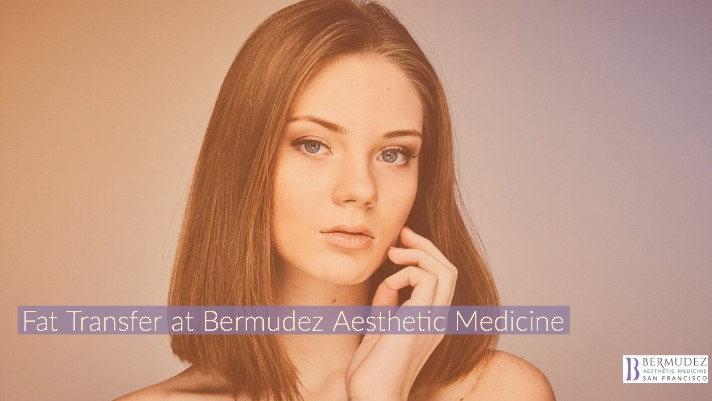Fat Transfer at Bermudez Aesthetic Medicine

Fat transfer, or fat grafting, is a procedure that uses liposuction to extract unwanted fat from selected areas of the body and place it into areas that lack volume.
During the procedure, fat is removed from the donor site, it is usually harvested from the abdomen, hips or thighs via liposuction. A special technique is used for the complete separation of fat. The fat is prepared in a centrifuge, then drawn into syringes and carefully placed into the body area where shape and volume are needed. Multiple injections may be necessary to achieve a full correction.
Fat transfer (grafting) results can last for years. There will be some re-absorption of the fat, but you will also form some of your own natural collagen as a result.
One common reason patients opt for fat transfer is to fill areas in the face that have become hollow over time and can leave you looking gaunt and /or asymmetric. In addition to restoring facial volume and asymmetry, fat transfer can correct facial folds and when injected in the lips result in a fuller, more desirable pout.
Fat transfer (grafting) may be used to correct defects on the body, such as depressions in the tissue resulting from injury or surgeries. These can be noticeable in clothing and leave the patient feeling self-conscious.
As more patients are learning about fat grafting, they are choosing it over synthetic dermal fillers such as Juvederm or Restylane. The idea of with your own fat is appealing as there are no concerns about allergies and it lasts longer than most hyaluronic acid fillers. More importantly, research has shown that the stem cells in your own fat can improve your skin tone and texture in addition to replacing lost volume.
After the fat grafting procedure has been completed you will have some tenderness, swelling and bruising in the donor site. The area in which the fat has been placed will also be swollen and you may experience bruising. You can apply cold compresses and it’s recommended you sleep with your head elevated for the first night or two. You will also want to wear a compression garment for comfort and to aid in healing the donor site.
For more information about fat transfer, or to schedule your consultation with Dr. Kenneth Bermudez, contact Bermudez Aesthetic Medicine at (415) 712-1800.











